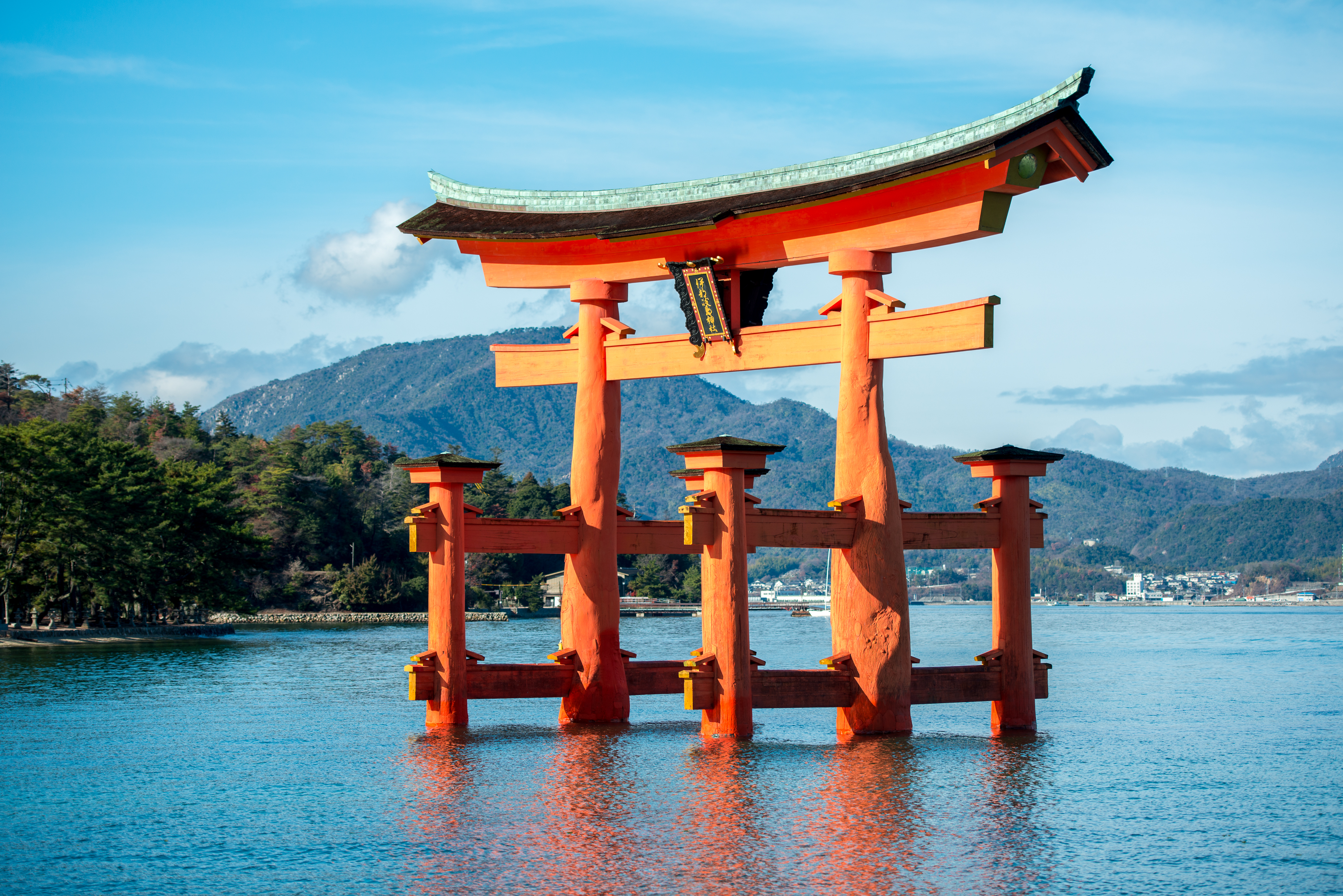|
Inoue Nobutaka
Inoue Nobutaka, (Japanese 井上 順 孝 Nobutaka Inoue) (born 1948), is a Japanese scholar of religious studies, who specializes in modern Shinto studies. He is a Professor Emeritius at Kokugakuin University. Education Nobutaka attended the University of Tokyo in Religious Studies. His thesis was written on the topic of ''Arguments Regarding Religious Freedom in the Meiji Period''. In graduate school he was influenced by Hirata Atsutane, a Japanese theologian who lived during the Edo period. Work In 1982, Inoue resigned from his position on the faculty of literature at the University of Tokyo, to take a job at Kokugakuin University. There he founded the Japanese Association for the Study of Religion and Society, and the Religious Information Research Center, an archive centered on the study of modern Japanese religion. Beginning in 1990, he served as co-editor of the definitve work, ''Encyclopedia of New Religions'' that covered over 400 religious leaders and 300 new religious gro ... [...More Info...] [...Related Items...] OR: [Wikipedia] [Google] [Baidu] |
Shinto
Shinto () is a religion from Japan. Classified as an East Asian religion by scholars of religion, its practitioners often regard it as Japan's indigenous religion and as a nature religion. Scholars sometimes call its practitioners ''Shintoists'', although adherents rarely use that term themselves. There is no central authority in control of Shinto, with much diversity of belief and practice evident among practitioners. A polytheistic and animistic religion, Shinto revolves around supernatural entities called the . The are believed to inhabit all things, including forces of nature and prominent landscape locations. The are worshiped at household shrines, family shrines, and ''jinja'' public shrines. The latter are staffed by priests, known as , who oversee offerings of food and drink to the specific enshrined at that location. This is done to cultivate harmony between humans and and to solicit the latter's blessing. Other common rituals include the dances, rites of pa ... [...More Info...] [...Related Items...] OR: [Wikipedia] [Google] [Baidu] |
Kokugakuin University
Kokugakuin University (國學院大學; ''Kokugakuin Daigaku'', abbreviated as 國學大 ''Kokugakudai'' or 國大 ''Kokudai'') is a private university, whose main office is in Tokyo's Shibuya district. The academic programs and research include Shinto study, Japanese history, Japanese and Chinese literature and Community development, as well as the study of economics, jurisprudence and pedagogy . It was established in 1882. History From its beginnings as the Office of Japanese Classics Research (an organization created in 1882 to seek deeper meaning in Shinto after controversies over certain deities), Kokugakuin University was one of the first universities in Japan to gain legal approval to be recognized as such under the university system (which preceded the Imperial university system, but was repealed in 1947). The Office of Japanese Classics Research, founded in 1882, in 1890 established a method of teaching the subject of '' kokugaku'' called Kokugakuin. In 1920, it ros ... [...More Info...] [...Related Items...] OR: [Wikipedia] [Google] [Baidu] |
University Of Tokyo
, abbreviated as or UTokyo, is a public research university located in Bunkyō, Tokyo, Japan. Established in 1877, the university was the first Imperial University and is currently a Top Type university of the Top Global University Project by the Japanese government. UTokyo has 10 faculties, 15 graduate schools and enrolls about 30,000 students, about 4,200 of whom are international students. In particular, the number of privately funded international students, who account for more than 80%, has increased 1.75 times in the 10 years since 2010, and the university is focusing on supporting international students. Its five campuses are in Hongō, Komaba, Kashiwa, Shirokane and Nakano. It is considered to be the most selective and prestigious university in Japan. As of 2021, University of Tokyo's alumni, faculty members and researchers include seventeen prime ministers, 18 Nobel Prize laureates, four Pritzker Prize laureates, five astronauts, and a Fields Medalist. Hi ... [...More Info...] [...Related Items...] OR: [Wikipedia] [Google] [Baidu] |
Hirata Atsutane
was a Japanese scholar, conventionally ranked as one of the Four Great Men of Kokugaku (nativist) studies, and one of the most significant theologians of the Shintō religion. His literary name was , and his primary assumed name was . He also used the names , , and . His personal name was . Biography Early life Hirata was born as the fourth son of , an ''Obangashira'' (low-ranking) ''samurai'' of Kubota Domain, in what is now part of the city of Akita in northern Japan. Little is known of his early childhood, but it appears he was impoverished and faced hostility from his step-mother. He left home in 1795, renouncing his ties to his family and to the Domain and traveled to Edo and worked as a laborer and as a servant, while pushing opportunities to study '' rangaku'', geography, and astronomy. In 1800, at the age of 25, he caught the attention of Hirata Tōbē (平田藤兵衛), a scholar and instructor in the Yamaga school of military strategy, formerly of Bitchū-Matsuy ... [...More Info...] [...Related Items...] OR: [Wikipedia] [Google] [Baidu] |
Aum Shinrikyo
, formerly , is a Japanese doomsday cult founded by Shoko Asahara in 1987. It carried out the deadly Tokyo subway sarin attack in 1995 and was found to have been responsible for the Matsumoto sarin attack the previous year. The group says that those who carried out attacks did so secretly, without being known to other executives and ordinary believers. Asahara insisted on his innocence in a radio broadcast relayed from Russia and directed toward Japan. On 6 July 2018, after exhausting all appeals, Asahara and six followers were executed as a punishment for the 1995 attacks and other crimes, and the remaining six on death row were executed on 26 July. At 12:10 am, on New Year's Day 2019, at least nine people were injured (one seriously) when a car was deliberately driven into crowds celebrating the new year on Takeshita Street in Tokyo. Local police reported the arrest of Kazuhiro Kusakabe, the suspected driver, who allegedly admitted to intentionally ramming his vehicle ... [...More Info...] [...Related Items...] OR: [Wikipedia] [Google] [Baidu] |
American Academy Of Arts And Sciences
The American Academy of Arts and Sciences (abbreviation: AAA&S) is one of the oldest learned societies in the United States. It was founded in 1780 during the American Revolution by John Adams, John Hancock, James Bowdoin, Andrew Oliver, and other Founding Fathers of the United States. It is headquartered in Cambridge, Massachusetts. Membership in the academy is achieved through a thorough petition, review, and election process. The academy's quarterly journal, '' Dædalus'', is published by MIT Press on behalf of the academy. The academy also conducts multidisciplinary public policy research. History The Academy was established by the Massachusetts legislature on May 4, 1780, charted in order "to cultivate every art and science which may tend to advance the interest, honor, dignity, and happiness of a free, independent, and virtuous people." The sixty-two incorporating fellows represented varying interests and high standing in the political, professional, and commerc ... [...More Info...] [...Related Items...] OR: [Wikipedia] [Google] [Baidu] |
Japanese Scholars
Japanese may refer to: * Something from or related to Japan, an island country in East Asia * Japanese language, spoken mainly in Japan * Japanese people, the ethnic group that identifies with Japan through ancestry or culture ** Japanese diaspora, Japanese emigrants and their descendants around the world * Japanese citizens, nationals of Japan under Japanese nationality law ** Foreign-born Japanese, naturalized citizens of Japan * Japanese writing system, consisting of kanji and kana * Japanese cuisine, the food and food culture of Japan See also * List of Japanese people * * Japonica (other) * Japonicum * Japonicus * Japanese studies Japanese studies ( Japanese: ) or Japan studies (sometimes Japanology in Europe), is a sub-field of area studies or East Asian studies involved in social sciences and humanities research on Japan. It incorporates fields such as the study of Japane ... {{disambiguation Language and nationality disambiguation pages ... [...More Info...] [...Related Items...] OR: [Wikipedia] [Google] [Baidu] |
1948 Births
Events January * January 1 ** The General Agreement on Tariffs and Trade (GATT) is inaugurated. ** The Constitution of New Jersey (later subject to amendment) goes into effect. ** The railways of Britain are nationalized, to form British Railways. * January 4 – Burma gains its independence from the United Kingdom, becoming an independent republic, named the ''Union of Burma'', with Sao Shwe Thaik as its first President, and U Nu its first Prime Minister. * January 5 ** Warner Brothers shows the first color newsreel (''Tournament of Roses Parade'' and the ''Rose Bowl Game''). ** The first Kinsey Report, ''Sexual Behavior in the Human Male'', is published in the United States. * January 7 – Mantell UFO incident: Kentucky Air National Guard pilot Thomas Mantell crashes while in pursuit of an unidentified flying object. * January 12 – Mahatma Gandhi begins his fast-unto-death in Delhi, to stop communal violence during the Partition of India. * January 17 &nda ... [...More Info...] [...Related Items...] OR: [Wikipedia] [Google] [Baidu] |
University Of Tokyo Alumni
A university () is an institution of higher (or tertiary) education and research which awards academic degrees in several academic disciplines. ''University'' is derived from the Latin phrase ''universitas magistrorum et scholarium'', which roughly means "community of teachers and scholars". Universities typically offer both undergraduate and postgraduate programs. The first universities in Europe were established by Catholic Church monks. The University of Bologna (), Italy, which was founded in 1088, is the first university in the sense of: *being a high degree-awarding institute. *using the word ''universitas'' (which was coined at its foundation). *having independence from the ecclesiastic schools and issuing secular as well as non-secular degrees (with teaching conducted by both clergy and non-clergy): grammar, rhetoric, logic, theology, canon law, notarial law.Hunt Janin: "The university in medieval life, 1179–1499", McFarland, 2008, , p. 55f.de Ridder-Symoens, Hild ... [...More Info...] [...Related Items...] OR: [Wikipedia] [Google] [Baidu] |
History Of Religion In Japan
History (derived ) is the systematic study and the documentation of the human activity. The time period of event before the invention of writing systems is considered prehistory. "History" is an umbrella term comprising past events as well as the memory, discovery, collection, organization, presentation, and interpretation of these events. Historians seek knowledge of the past using historical sources such as written documents, oral accounts, art and material artifacts, and ecological markers. History is not complete and still has debatable mysteries. History is also an academic discipline which uses narrative to describe, examine, question, and analyze past events, and investigate their patterns of cause and effect. Historians often debate which narrative best explains an event, as well as the significance of different causes and effects. Historians also debate the nature of history as an end in itself, as well as its usefulness to give perspective on the problems of the p ... [...More Info...] [...Related Items...] OR: [Wikipedia] [Google] [Baidu] |
Religion In Japan
Religion in Japan is manifested primarily in Shinto and in Buddhism, the two main faiths, which Japanese people often practice simultaneously. According to estimates, as many as 80% of the populace follow Shinto rituals to some degree, worshiping ancestors and spirits at domestic altars and public shrines. An almost equally high number is reported as Buddhist. Syncretic combinations of both, known generally as , are common; they represented Japan's dominant religion before the rise of State Shinto in the 19th century. The Japanese concept of religion differs significantly from that of Western culture. Spirituality and worship are highly eclectic; rites and practices, often associated with well-being and worldly benefits, are of primary concern, while doctrines and beliefs garner minor attention. Religious affiliation is an alien notion. Although the vast majority of Japanese citizens follow Shinto, only some 3% identify as Shinto in surveys, because the term is understood ... [...More Info...] [...Related Items...] OR: [Wikipedia] [Google] [Baidu] |




.jpg)
